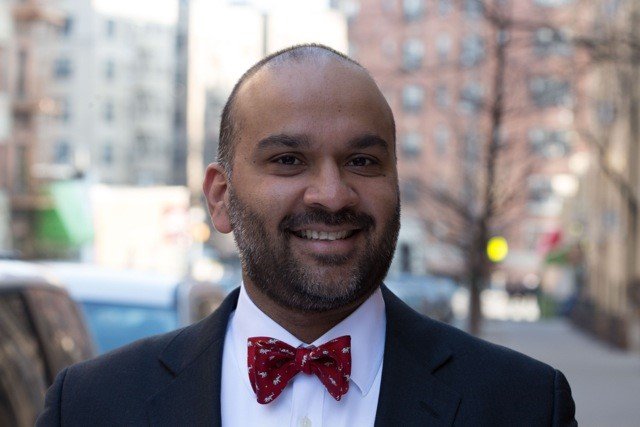Asian American judicial org. works to diversify bench
/Shahabuddeen A. Ally, the supervising judge in New York County Civil Court, was recently elected to serve as president of the Asian American Judges Association of New York. Photo courtesy of Ally
By Jacob Kaye
Though it’s been in existence for nearly a decade, the Asian American Judges Association of New York is just beginning to establish itself in New York’s legal world, the association’s new president says.
The judge’s association just recently held elections for its executive committee, which is now dominated by Queens judges.
The committee, which is made up of four elected officers and five board members, features four Queens judges – Queens Supreme Court, Criminal Term Judge Ushir Pandit-Durant serves now as the association’s vice president, Queens Civil Court Judge Changyong Li is the secretary, recently elected Queens Supreme Court, Criminal Term Judge Karen Gopee is the treasurer and Queens Supreme Court, Criminal Term Judge Francis Wang is now a member of the board of directors.
Shahabuddeen A. Ally, the supervising judge in New York County Civil Court, was elected to serve for the next year as AAJANY’s president.
“I keep pointing to Queens because it has very robust representation,” Ally told the Eagle. “I'm actually very jealous that Manhattan doesn't have that representation.”
Ally is beginning his tenure with the organization as it heads into its tenth year. While it’s served as rallying organization of Asian American judges, it’s yet to get its feet totally off the ground when compared to other judicial and legal associations, Ally said. But not for any fault of its members.
Asian Americans are among the least represented ethnic population on the bench in New York State, when compared to the state’s overall Asian American population.
Around 25 percent of Queens population is white, around 27 percent is Hispanic or Latino, around 17 percent is Black and around 27 percent of the borough’s population is Asian, according to Census data. Asian Americans accounted, by far, for the largest population growth in Queens in the past year – the population grew by 29 percent, outpacing the borough’s overall 7.8 percent growth.
But the story is different on the bench.
Asian judges, the least represented racial or ethnic group on the bench, make up around 6 percent of Queens’ judiciary. White judges account for around 66 percent of the bench, 17 percent of judges are Latino and 17 percent are Black, according to data from the Office of Court Administration.
In Queens’ Family Court, there’s one Asian judge. There isn’t an Asian American judge in the borough’s Housing Court.
The lack of Asian American judges on the bench throughout the state was also a point made by former U.S. Secretary of Homeland Security Jeh Johnson, who authored the Equal Justice in the Courts report in 2020.
AAJANY’s membership consists of 46 judges - 44 of those are based in New York City.
Though there is a lot of work left to be done, diversity efforts on the bench appear to be headed in the right direction, Ally said.
“OCA has been a very good partner in trying to promote and advance all judges, and, in particular, Asian American judges,” the judge said.
Retired Queens Judge Randall Eng became the first Asian American judge to serve as a New York State Supreme Court justice in 1991. Many Asian American judges currently on the bench are still breaking barriers.
Ally is the first South Asian supervising judge in the state’s history. When she was elected last year, Gopee became the first South Asian judge elected to serve on the Supreme Court bench.
“[Hopefully] one or two lawyers look at Judge Gopee and say, ‘Wait a second, I can do it – if she did it, I can do it,” Ally said. “That's all it takes, it's really that simple. But without those markers, we’re lost.”
The judge says representation goes a long way – particularly in his own history with the law.
Ally, whose family is from Guyana, was named after one of the country’s former attorney generals, who served after Guyana’s liberation from British colonial rule and who helped write the country’s post-colonial constitution.
Diversity on the bench means “more public confidence,” in the judiciary, Ally said.
“Judges are public servants and we only exist to serve the public and the community,” he said. “I think when you have a bench where people come from different places, where their paths are different, that variety of perspectives helps bring out better results.”
Ally said representation may be the key to diversifying the bench further.
“What we want to do is inspire someone to have the desire to be a judge,” he said.
In that vein, AAJANY will begin to host a number of events drawing attention to the achievements of Asian American judges and engage with a number of organizations in Queens’ and New York City’s legal community to bring awareness to their efforts.
Lucian Chalfen, an OCA spokesperson, said that OCA recognizes the importance of diversity throughout the court system, and in particular, in courts that deal more directly with members of the public.
“We are keenly aware how important diversity, or the lack of it, can have an effect on the criminal justice system,” Chalfen said in a statement to the Eagle. “That is why in any area that we have a greater influence on judicial appointments, such as New York City Housing Court, the bench more fully reflects all New Yorkers. And why the Chief Judge is championing the simplification of the court structure, which would directly lead to a wider pool of candidates, as well as to better serve all litigants.”




